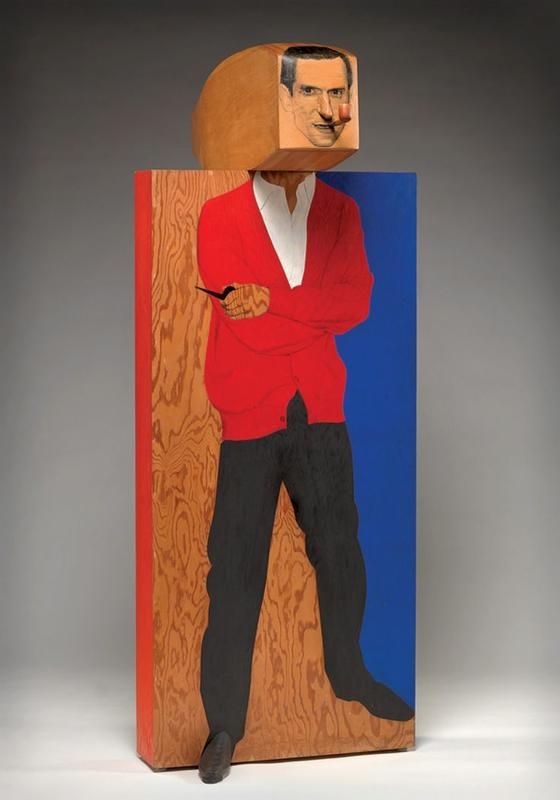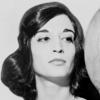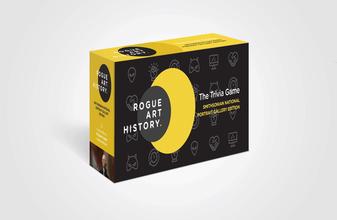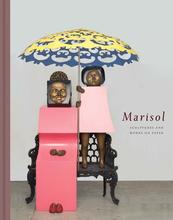More about Hugh Hefner
- All
- Info
- Shop
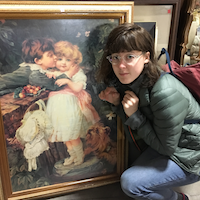
Contributor
Marisol Escobar’s sculptural portrait of Hugh Hefner was featured on a Time Magazine cover and subtitled “The Pursuit of Hedonism,” but the portrait itself is a surprisingly wholesome representation of the person who single-handedly created the Playboy ethos.
Escobar has long been known for her unconventional portraiture (check out how she depicts Georgia O'Keefe). The raw wood material and campy clothing seem at odds with the glossy, sleek Hugh Hefner that we see in print and on TV screens. His “bad boy” mystique does come into view, however, through the two pipes included—a real one in his mouth and one painted in his hand—along with a slightly provocative facial expression.
The decision to include two pipes instead of just one, for Escobar, was anything but arbitrary; Hefner’s pipe was his trademark along with the silk pajamas (of which he owned over two-hundred pairs) and sailor hat to top it off. Her intention was to emphasize this attribute as a nod to his suave persona in an otherwise uncharacteristic portrayal—in her words, "he has too much of everything." As we all know, Hugh Hefner’s life was anything but wholesome. His past is praised by some and seen as highly problematic by others, but whether you like him or not, there’s no denying the that he led a colorful life.
Hefner harbored an early longing to overthrow the puritanical ideology that he experienced coming of age in a stifling 1950s Midwestern family. At age of twenty-seven, he took out a loan for $600 and borrowed another $8,000 from his parents to put together a nude calendar featuring Marilyn Monroe and just like that, Playboy was born. As it turned out,1950s America was the perfect time and place to launch such an endeavor, and it was a near-instant success: Playboy tapped into a goldmine of repressed sexual energy while also creating an instruction manual of sorts for young men wishing to navigate emerging fashion and culture—essentially, “how to be cool and get chicks.” His first issue sold 50,000 copies, so we can safely assume that he was able to pay back good ol’ mom and dad. It wasn't long before he was able to open the first Playboy mansion in Chicago (later home to the Museum of Contemporary Art). He purchased the plot next to Marilyn Monroe's grave in Westwood Village Memorial Park for $75,000, assumedly as a nod to the woman who brought him early success.
This piece was made specifically for the Time Magazine cover that debuted it, which seems like a lot of work for a magazine cover that could be achieved with a simple photograph, but Escobar’s sculpture does something that a photograph can’t do. Her piece doesn't portray Hugh Hefner realistically, as a photograph would. Instead, it's Hefner through the satirical eyes of badass female Pop Artist Marisol Escobar. On the subject, Hefner himself quipped, “I thought it was very classy but at the same time, I would have liked to have an actual photograph. I’m so cute!”
Sources
- Shamsian, Jacob. "The 16 most bizarre facts about Hugh Hefner's life". Insider Magazine. https://www.thisisinsider.com/hugh-hefner-things-you-didnt-know-2017-9 (accessed 17 July 2018).
- Pikaart, Hannah. "Playboy Turned on Artists, Too. See 7 Important Artworks Inspired by Hugh Hefner’s Magazine". Artnet. https://news.artnet.com/art-world/7-artists-playboy-hugh-hefner-1099106 (accessed 17 July 2018).
- Green, Elon. "When Playboy Went Mainstream". Time Magazine. http://time.com/3547122/playboy-hugh-hefner-1967/ (accessed 17 July 2018).

